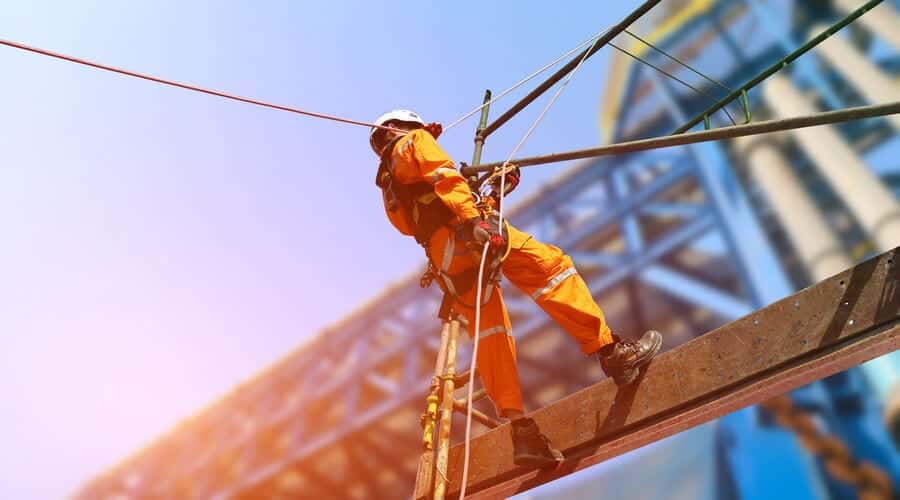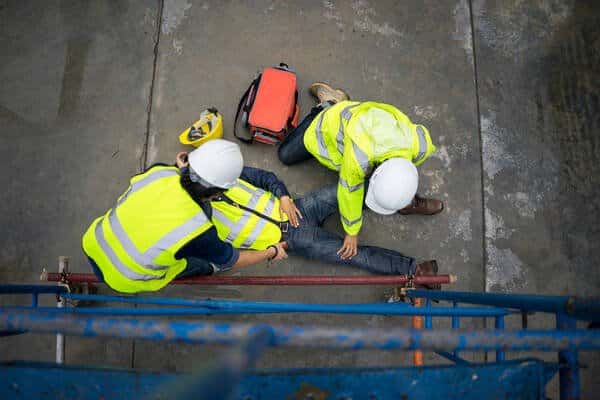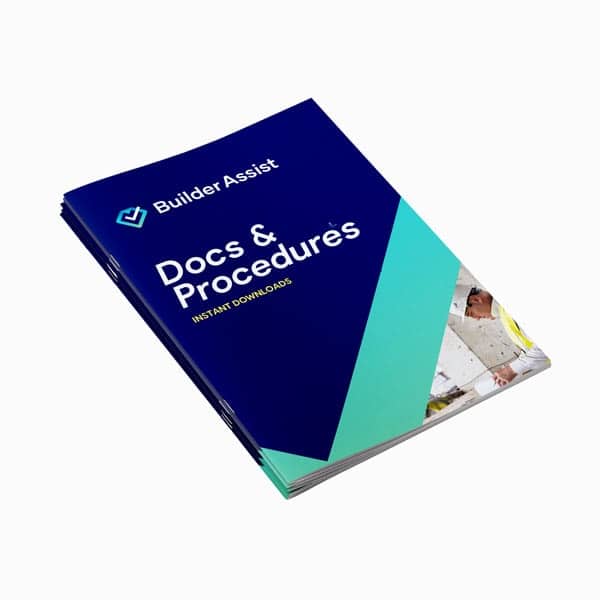
Construction sites are busy and potentially dangerous places to work, with the risk of injury always present.
Being struck by a moving object, for example, is a major cause of injury in the construction industry in Australia. It can include being struck by a vehicle, equipment, or an object that falls, swings, or rolls. Injuries can be minor, serious and, in some cases, fatal. So, how do you safeguard workers from injuries like these, and why is a construction WHS policy so important?
A construction WHS policy outlines goals, responsibilities and obligations for Work Health and Safety for all business operations. It forms an important part of the larger, more detailed Safety Management Plan which is a legal requirement for each construction project carried out by construction businesses.

A construction WHS policy outlines goals, responsibilities and obligations for Work Health and Safety for all business operations.
Here are five reasons why you need one:
1. It's a legal requirement
Each Australian State and Territory has Acts and Regulations that require a person conducting a business or undertaking (PCBU) to provide a safe and healthy workplace for employees. A construction WHS policy is a crucial tool for achieving this. It outlines safety procedures and protocols for workers to follow to safeguard them from injury on all projects. In addition, it ensure worksites are safe. To find out more about your legal obligations and relevant regulations go to our Acts and Regulations resource.
2. A construction WHS policy helps minimise incidents, safeguard workers, and protect work sites from the negative impacts of physical injuries
Physical injuries can be minor, serious and, in some cases, fatal. Being involved in a physical incident can make it difficult or impossible for workers to continue working. For workers, this can mean financial hardship and the stress from lost income. Simultaneously, having a worker off the tools will cost employers valuable time and money, with delays in completing construction projects.
3. Build and maintain a reputation as a safe and supportive employer
A reputation as a safe and supportive employer will attract skilled and experienced workers. A successfully implemented construction WHS policy will encourage safe worksites, attract high quality workers, leading to a better quality product. Subsequently, attracting clients.
4. A construction WHS policy helps to maintain site productivity and reduce the mental impacts of injuries
Being involved in a workplace incident can take a toll on workers' mental health, well beyond when the physical injury is healed. There is potential for workers to develop issues with anxiety, depression and post-traumatic stress disorder even for small injuries and incidents. Poor mental health can mean a delayed return to work, or even poor performance and concentration once back on the tools.
5. Reduce the stress of Workers Compensation
By implementing and successfully following a construction WHS policy you reduce the risk of an incident, and therefore, a Workers Compensation claim. Workers compensation provides support to workers and employers when a worksite injury has occurred. This may include support with costs of medical expenses and lost wages. However, navigating the workers compensation system can be a daunting task, and may cause additional stress while waiting for claims to be processed.
Review your construction WHS policy often
It’s important that your construction WHS Policy and Safety Management Plan are reviewed regularly and updated to reflect current worksite conditions. Above all else, having the right proactive steps and construction risk management tools in place is the best way to prevent negative impacts on your work site and the construction industry.
Safety Management Plan Requirements
A construction WHS policy is one document that is required as part of the much more detailed Safety Management Plan, which is a legal requirement for all worksites. Along with a construction WHS policy, there is key information a Safety Management Plan should include. Some key requirements are:
- An outline of the management process of risks and incidents. This includes risk control procedures, incident reporting, site safety rules and rehabilitation processes in the event of an incident.
- Safe Work procedures and the management of contractors and workers. This section references your worksite’s Job Safety Analysis’ (JSAs), Safe Work Method Statements (SWMS) and other Work Health and Safety (WHS) procedures that ensure the safe rollout of works onsite. These must be in compliance with both the Work Health & Safety Act and Regulations for your state or territory. They may also cover topics of fatigue management and safety discipline.
- Consultation and Communication processes on site. This section outlines what methods of communication are in place with workers, including subcontractors, across the entire project. These will likely include daily pre-start meetings and weekly toolbox consultations. These meetings are an opportunity for discussions around continuous improvement and site safety.
You can read more about Safety Management Plans on our Blogs ‘What is a Safety Management Plan?’ and “What does a WHS Management Plan include?”
How to write a construction WHS policy
If you need a construction WHS policy and want to know how to write one, head to our blog How to write a construction WHS policy for a detailed list of inclusions it will require.
If you have written your own construction WHS Policy or SMP, and you’re not sure if it is enough to protect your workers, Builder Assist offers a number of templates that are specific to your trade, user-friendly and instantly downloaded. These templates include:
- Industry-leading documentation developed by award-winning industry experts
- Microsoft formatting for easy editing
- Customisable to your company brand
- Full instructions on how to use the templates
Easily purchase a trade-specific Safety Management Plan template, or search our huge range of safety, quality management, and human resource documents for the construction industry.

Safety Management Plans (WHS)
Specifically designed for each trade starting up a business, these Work Health Safety Management Plans or WHS Management Plans, provide support with the management of Work Health & Safety in the workplace. Also referred to as Occupational Health & Safety (OH&S) the material provided in this section will assist with WHS/OHS management and training requirements for the workplace.


